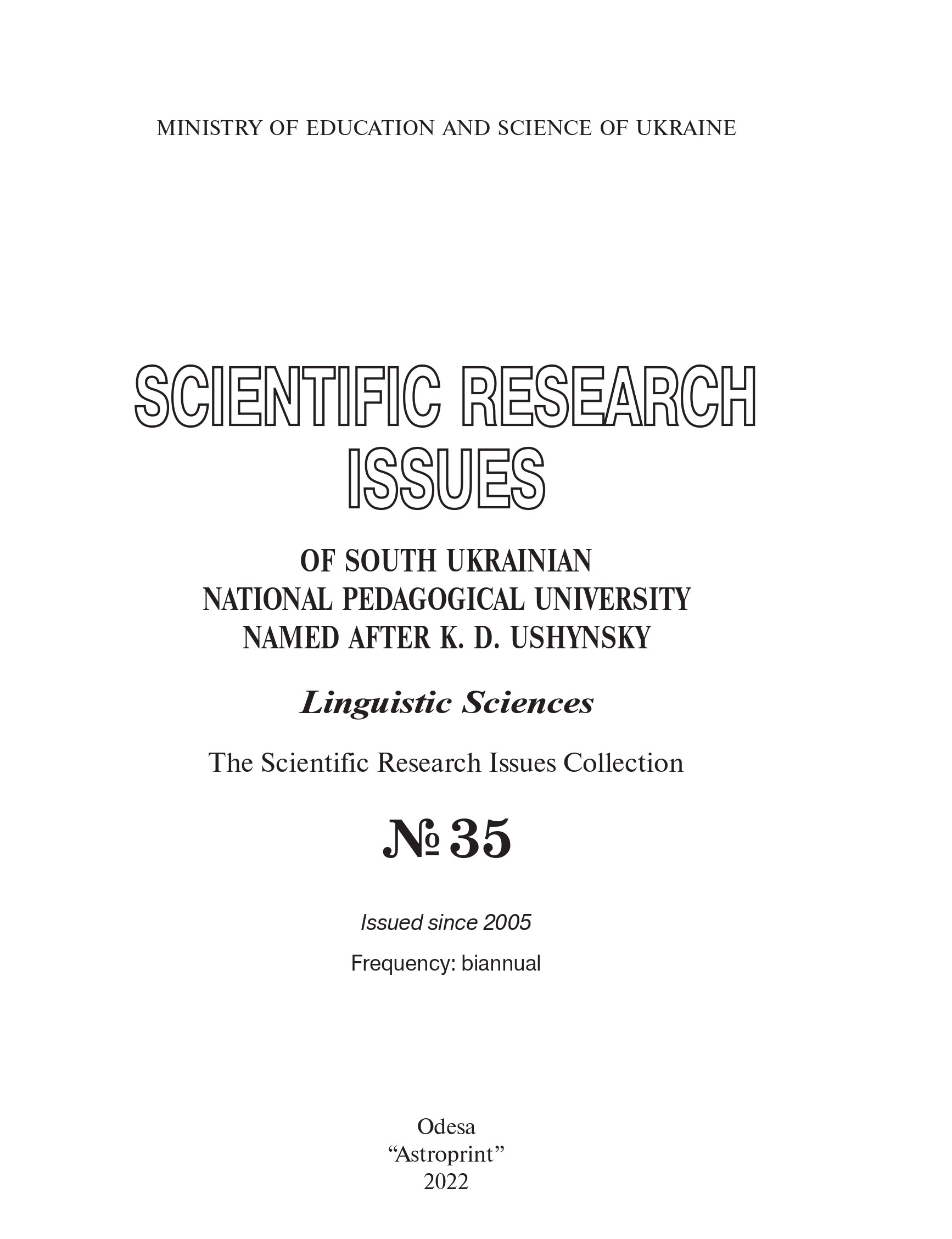Doctor of Philology, Professor, Head of the Department of Translation, Theoretical and Applied Linguistics of the State Institution “South Ukrainian National Pedagogical University named after K. D. Ushynsky”,
Odesa, Ukraine
e-mail: kortami863@gmail.com
ORCID ID: https://orcid.org/0000–3441–196X
Olha Aleksandrova
Candidate of Philology, Associate Professor at the Department of Foreign Languages for Humanities, Odessa I. I. Mechnikov National University,
Odesa, Ukraine
e-mail: olgaaleks2016@gmail.com
ORCID ID: https://orcid.org/ 0000–0002–1224–5916
Svitlana Yukhymets
Candidate of Pedagogical Sciences, Associate Professor at Philology Department,
Odesa National Maritime University,
Odesa, Ukraine
е-mail: yukhymets.svetlana@gmail.com
ORCID ID: https://orcid.org/0000–0003–3350–7310
DOI:
SUMMARY
This article examines the peculiarities of modal-emotional connotations used in English-language texts in maritime documents, the functional and semantic characteristics of subjective modality units (epistemic, axiological, aletic and deontic) are studied.
The results of the research based on the material of maritime-related documents showed that despite the fact that the main distinctive characteristics of the documents include the presence of factual (cognitive) information, the monosemantics of the used terms and distinct content of the text, the author’s personal attitude to the researched problem, his individual characteristics of speech and personality often appear in the texts of the documents. Moreover, the emotional and modal characteristics of the analyzed texts, their orientation, do not in any way interfere with the cognitive semantics of the text.
Despite the fact that modal values are subject to the pragmatic task of the work, the goal, which is dedicated to one topic, and the clear structure of presenting the research results, the functional and semantic side of documentary texts is formed not only at the expense of the objective component, but at the expence of the subjective one too. That is why syntactic (parallel constructions emphatic word order, constructions with interjections and with the meaning of intellectual assessment) and morphological (perfect / imperfect verb forms), stylistic (epithets, comparisons) are widely used alongside with lexical means of expression. Some features of the content structure of the work are related to national or cultural peculiarities. An absolutely isomorphic feature of the compared scientific works is that the methods, techniques and manner of language communication is closely connected with the features of the person’s speech, his professional style and his individuality. Explicit presentation of modal meanings strengthens the emphasis on the importance of the introduced information
Key words: typology, scientific and technical literature, maritime documentation, subjective modality
REFERENCES
Auwera, van der J., Ammann, A. & Kindt, S. Modal Polyfunctionality and Standard Average European Modality. Studies in form and function. van der J. Auwera (Ed.). London: Equinox Publishing Ltd. [in English].
Borysenko, O. A. (2005). Porivnialna typolohiia anhliiskoi ta ukrainskoi mov dlia perekladatskykh vydan VNZ [Comparative typology of English and Ukrainian languages for university translation publications]. Kyiv: MAUP [in Ukrainian].
Brytsyn, V. M. (2006). Modalna hramatyka dyskursu yak odyn iz napriamkiv semantykosyntaksychnykh doslidzhen [Modal discourse grammar as one of the directions of semantic and syntactic research]. Movoznavstvo — Linguistics, 2–3, 101–110 [in Ukrainian].
Bybee, J. & Fleischman, S. (1995). Modality in Grammar and Discourse. Amsterdam: John Benjamins Publishing company [in English].
Good, J. (2008). Linguistic Universals and Language Change. Cambridge: Cambridge University Press [in English].
Halliday, M. A. K. (1966). Intonation systems in English. Patterns of Language. Papers in general, descriptive and applied linguistics. (pp. 111–133). London: Longmans [in English].
Hogeweg, L., Hoop, de H. & Malchukov, A. (Eds.). (2009). Cross-linguistic Semantics of Tense, Aspect, and Modality. Amsterdam: John Benjamins Publishing company [in English].
Korolova, T. M. (1989). Intonatsiia modalnosti v movlenni [Modality intonation in speech]. Kyiv, Odesa: Vyshcha shkola [in Ukrainian].
Levytskyi, A. E. (2004). Porivnialno-typolohichni osoblyvosti etnokulturnykh markeriv
u leksychnykh systemakh ukrainskoi y anhliiskoi mov [Comparative-typological features of ethnocultural markers in the lexical systems of the Ukrainian and English languages]. Movni i kontseptualni kartyny svitu — Linguistic and Conceptual Pictures of the World, 11 (part 1), 262–265 [in Ukrainian].
Palmer, F. R. (2001). Mood and Modality. 2nd edition. Cambridge: Cambridge University Press [in English].

